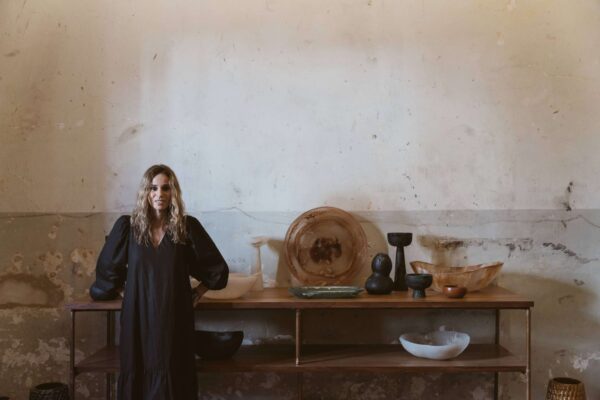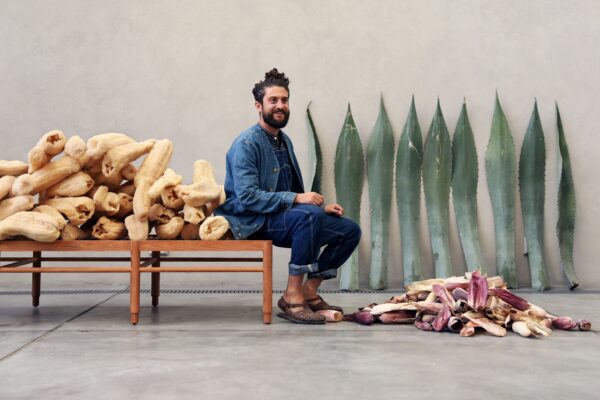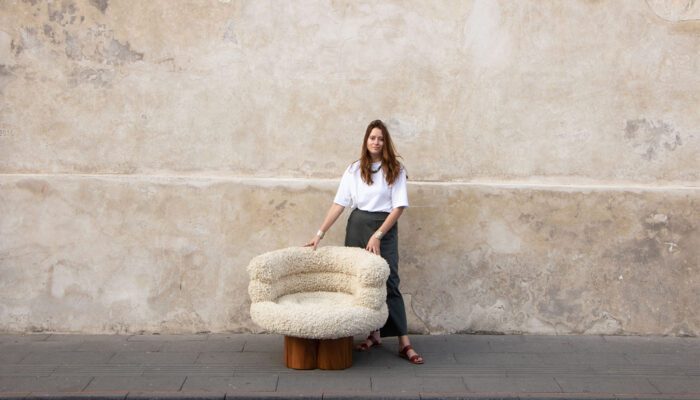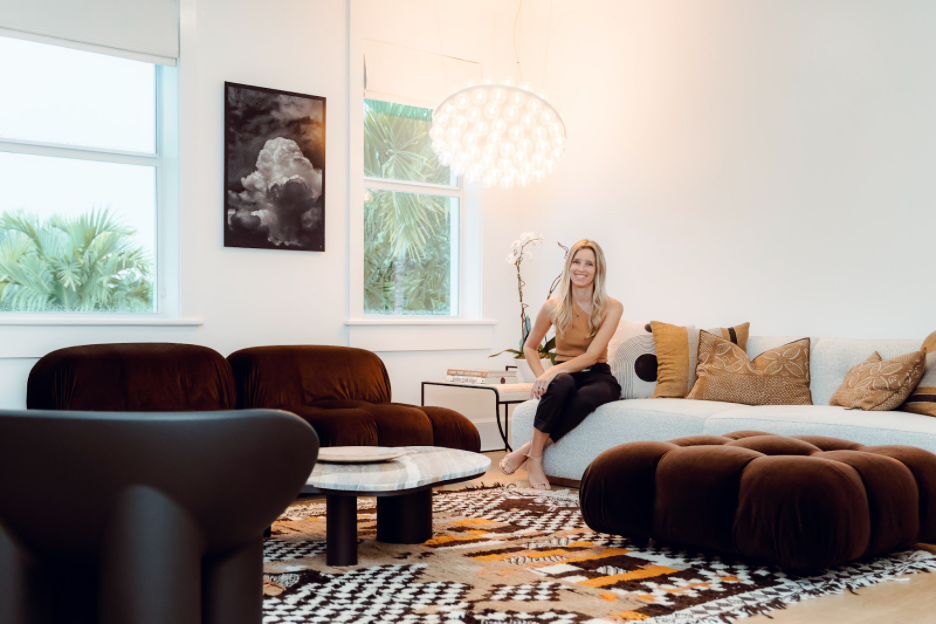
COFFEE WITH
DESIREE CASONI: “WHAT WE’RE DOING HAS BEEN REFERRED TO AS A NEW RENAISSANCE, A NEW WAY OF SEEING ART”
Name: Desiree Casoni
Profession: Architect, Interior Designer and Entrepreneur
Nationality: Dominican-Italian
Zodiac sign: Cancer
Instagram: @desireecasoni
LATINNESS: Desiree, as an architect and designer, you have such a unique perspective and aesthetic sensibility. Where did you grow up and what did you study?
DESIREE: I’m a designer. I was born in Florence, Italy. My mother is Dominican, my father is Italian, and I grew up in the Dominican Republic. My studies are architecture, but I do mostly interior design, and now I’ve branched into digital design, digital art and this whole movement that is happening now with art because my husband has been in this world of cryptocurrencies, blockchain and NFTs for almost a decade. So now we’ve finally met because he’s into art and we’re doing cool projects together.
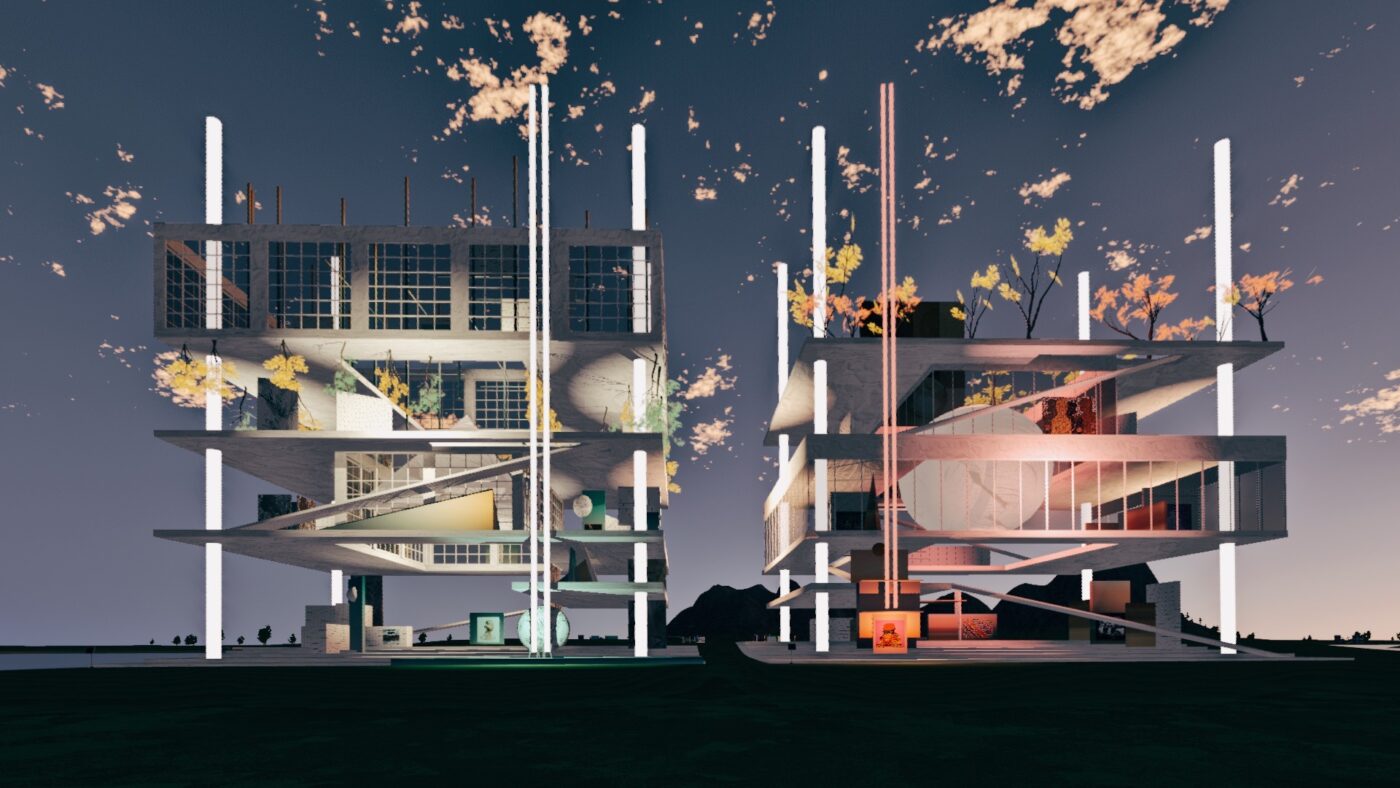
The Somnium Space Metaverse exhibition.
LATINNESS: Tell us more about this. What is digital design?
DESIREE: So he’s invested in digital land, which they now call the metaverse. I think he was one of the first people, and he kept talking to me about this, saying “We have this land where we could do cool stuff”. I was always like “I don’t code so I don’t know how to help you. I could design something, but we need to hire somebody who’s going to help me do the computer stuff”.
Then in January 2020, they finally had a builder, which is a program where you can build things, and it’s much easier for non-tech users. I can do renderings and I can do Rhino, Macs, all of those, but these programs need actual code. I don’t know if you’ve played The Sims where you build your own house and things like this? So with this one, you have this lot of land, and instead of a game, you’re buying this land and you have this much credit to build something. So we had a collection of digital art, and the cool part about digital art is where do you display it?
In the pandemic, nobody was seeing anybody’s house. Nobody was visiting galleries. Nobody was traveling. So we came up with these digital galleries where I would talk to an artist via Zoom or Google Meet, and then we would come up with an idea of how we wanted to display his collection, and we would get to keep two pieces from him because of the exhibition that we were creating. One was inspired by constructivism, so I would create this space where it’s all jaggeded angles, the pieces are floating, the walls come to the ground once you enter the gallery and it’s all in VR (virtual reality).
It was very surreal, but it was very exciting because most of these artists, when the pandemic hit, didn’t know what to do with themselves. All the galleries had canceled shows. The artists were stuck at home, and some couldn’t go to their big studios to work on a large scale. They would be working from their studios, and we would digitize their work. We expanded into these galleries that I was making for any size, and they were meeting live with people. We would do Q&A’s. We would do tours. We would do all of that with them.
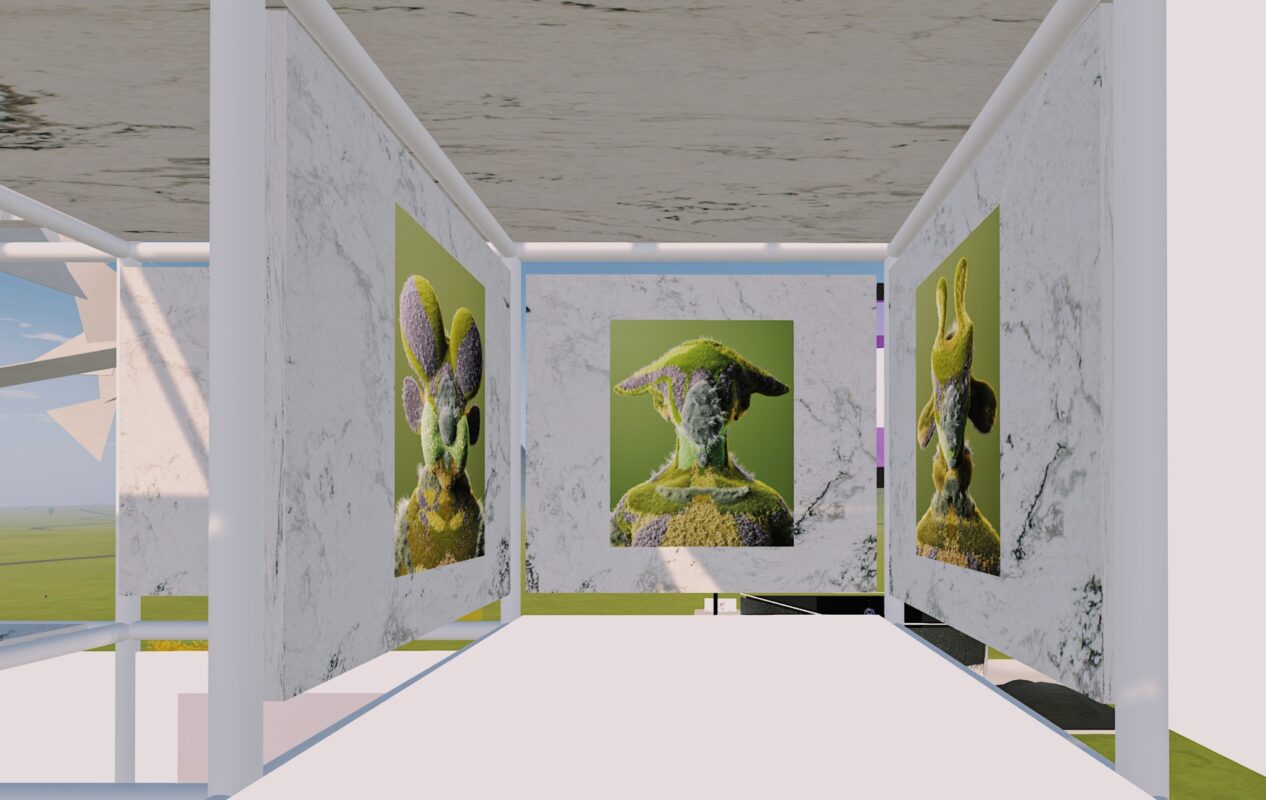
The Somnium Space Metaverse exhibition.
LATINNESS: What’s the scene in Latin America with digital art like right now?
DESIREE: In Latin America, there’s been a lot of movement, especially in Argentina, with digital artists. Digital artists there didn’t know how to monetize, so the technology behind NFT has helped them a lot.
It’s cool, because in architecture school, they teach you all these 3D programs to learn how to build in real life. Sometimes you would make these very cool, surreal environments, especially in grad school and undergrad, because they push you to use your imagination. And it’s not that they couldn’t be built, but they would be very expensive to build, or regulations and cities wouldn’t allow you to build, or it would take forever.
In these spaces, creativity has flourished because while there are regulations in terms of things like software or the amount of internet that can load the piece, you can do these amazing things and still see it and live it in a different way. So that excites me a lot, and, slowly we need to educate people about it.
As far as Latin American designers and artists, first of all, there’s not that many women. It’s mostly people who are very techie and know this language. There’s a barrier for a lot of people, and it’s more like these computer dudes. Asian and Eastern European and some Americans are creating these spaces. You know, in Latin America, we’re more used to the tangible, que se agarre, material firme, but I think the creativity in Latin America exists so I hope to see that soon, which is what I saw in Argentina.
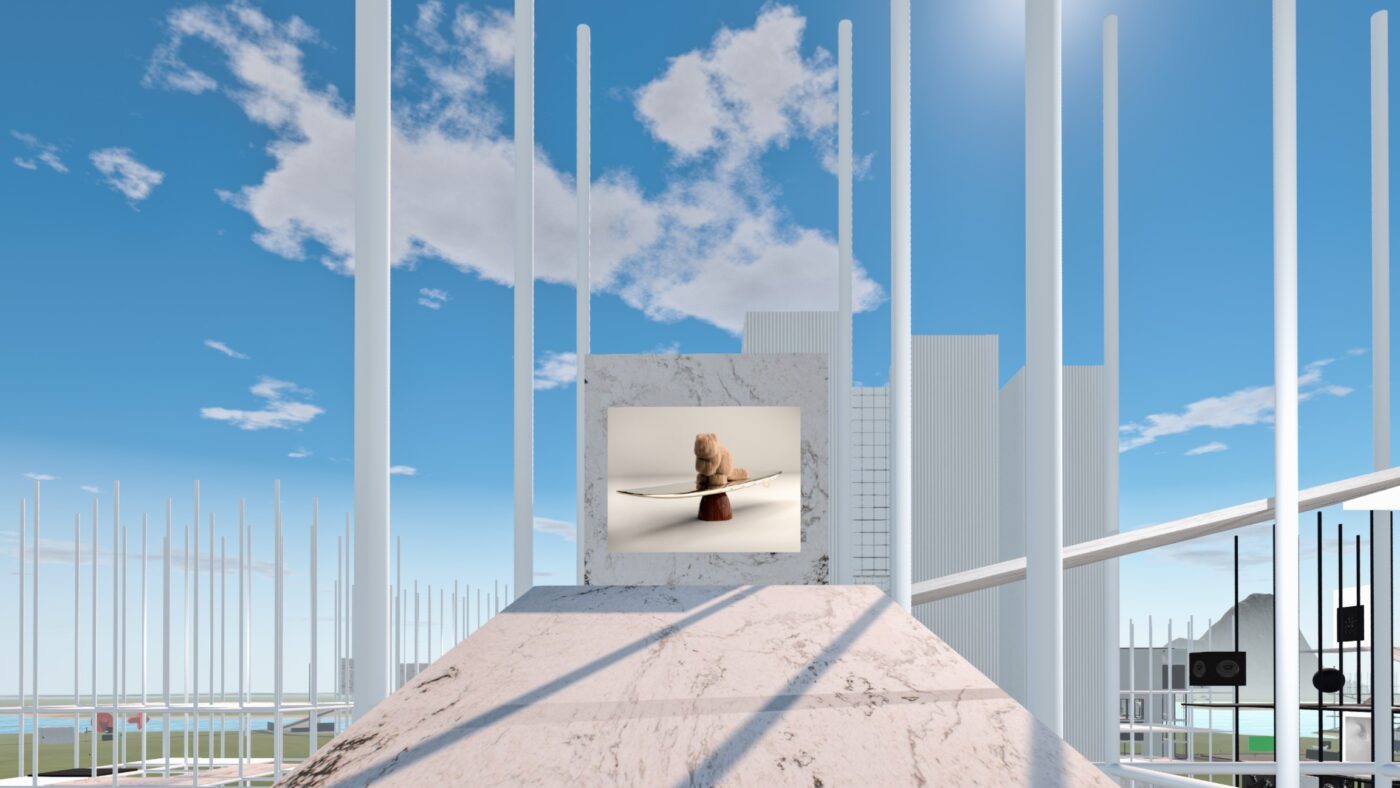
The Somnium Space Metaverse exhibition.
LATINNESS: Do you think this will be an opportunity for young artists or designers to present themselves in a new sort of art industry?
DESIREE: For sure, it’s the younger generations who are doing this. For example, Andres Reisinger, an Argentinian based in Barcelona, does these videos where his pieces move and do things. If you buy that digital piece, you also get a physical sofa that moves in the video. It’s called the complicated sofa, and it does things that furniture can’t really do in real life.
You’re still making real things that I think older generations are still interested in. I think the beauty of this technology is that you have younger generations and older generations joining together. There’s a lot of collaboration, so physical languages come together.
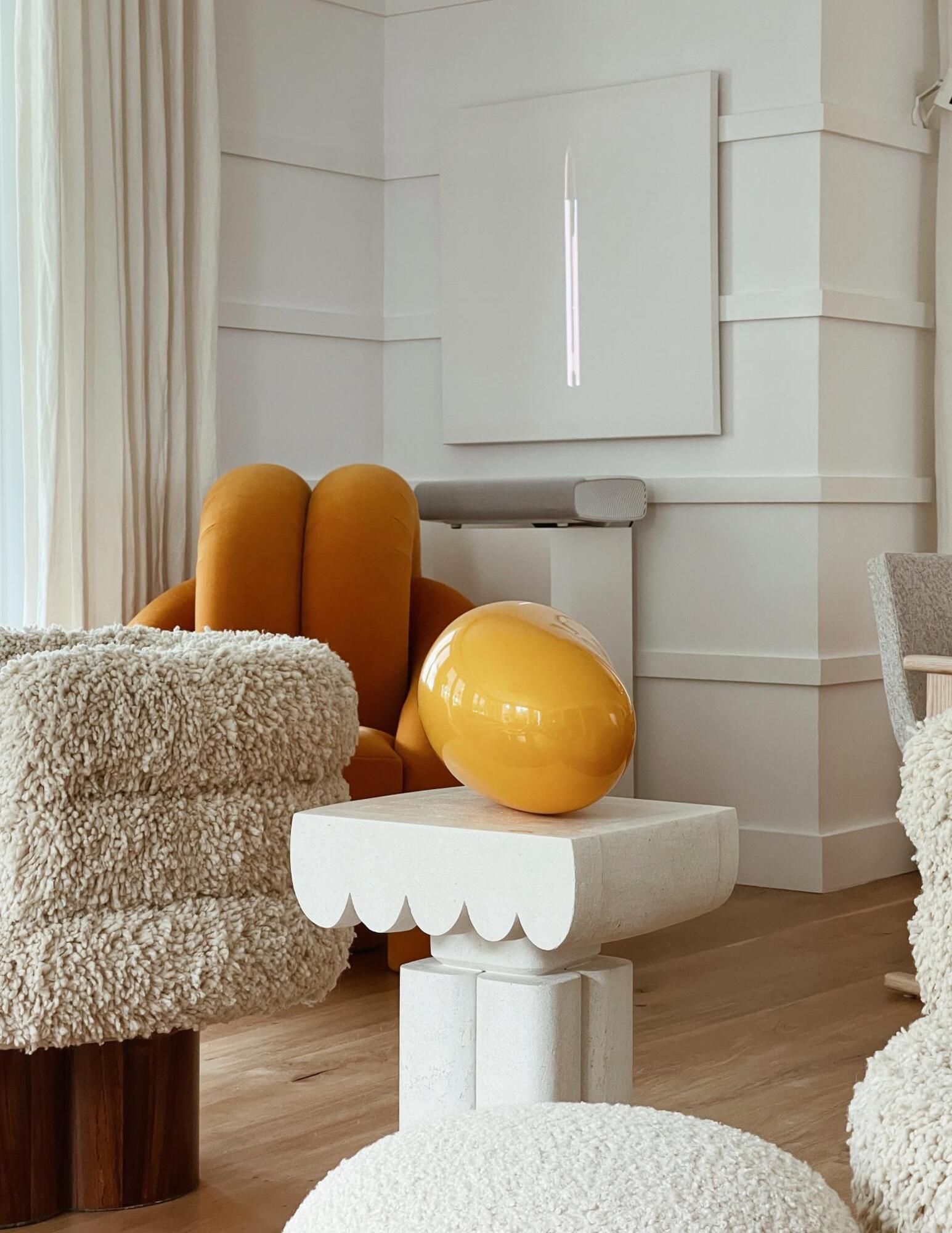
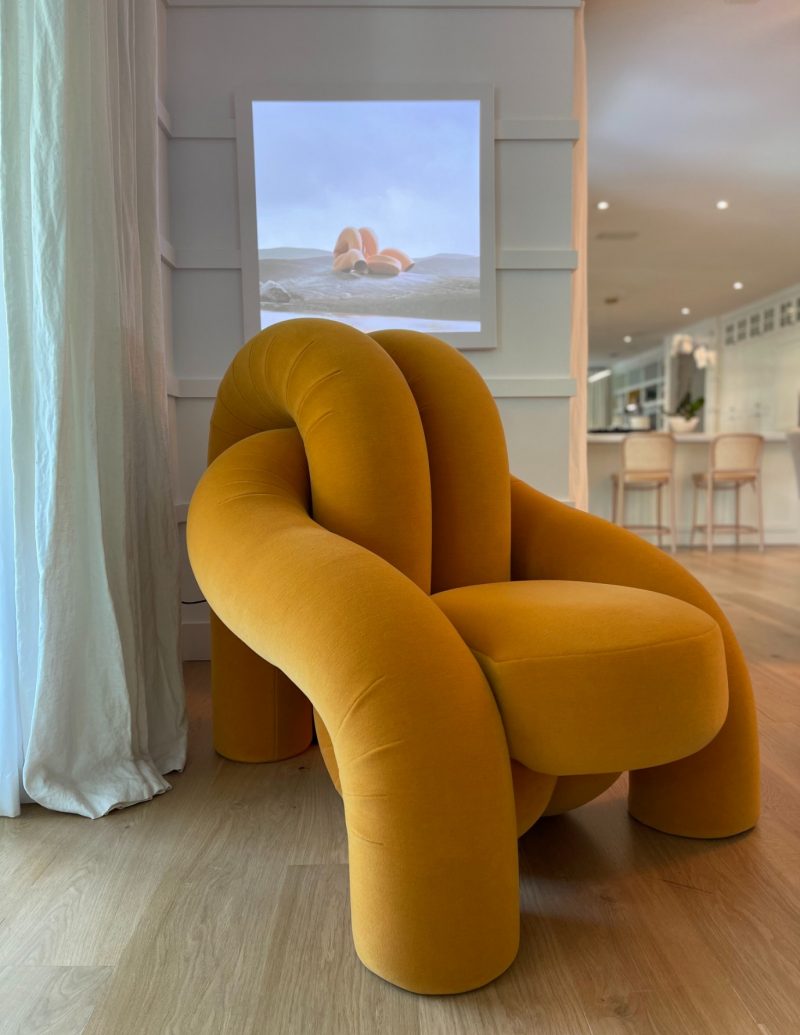
LATINNESS: Tell us about Aorist, which you recently launched.
DESIREE: Aorist embodies a cross-disciplinary program of artist commissions, international exhibitions and partnerships that bridge the digital and physical domains, while supporting experimentation, co-creation and innovation.
LATINNESS: So coming back to physical reality, you’re both an architect and an interior designer– which came first?
DESIREE: So it’s very funny. My mother is an architect. She’s done both architecture and interior design for her clients, and then family projects from her side. I grew up in her office and just loved being there. The material, samples, the colors when she was doing everything by hand. When I was little, my favorite thing to do was build doll houses. I would make the dollhouse, get tired of it, and want to redo the doll house again.
I think I was more of an interior designer at heart. Something about the coziness of an interior, but I thought that I needed the full structure, the full immersion of design, and I think the mother of design is architecture. It was the best decision I’ve ever made because you do interiors in architecture, but you don’t do architecture in interiors. It was very interesting to learn about structures, about environmental behaviors of structures outside, and I think it expanded a lot more than if I would have gone for interior design.
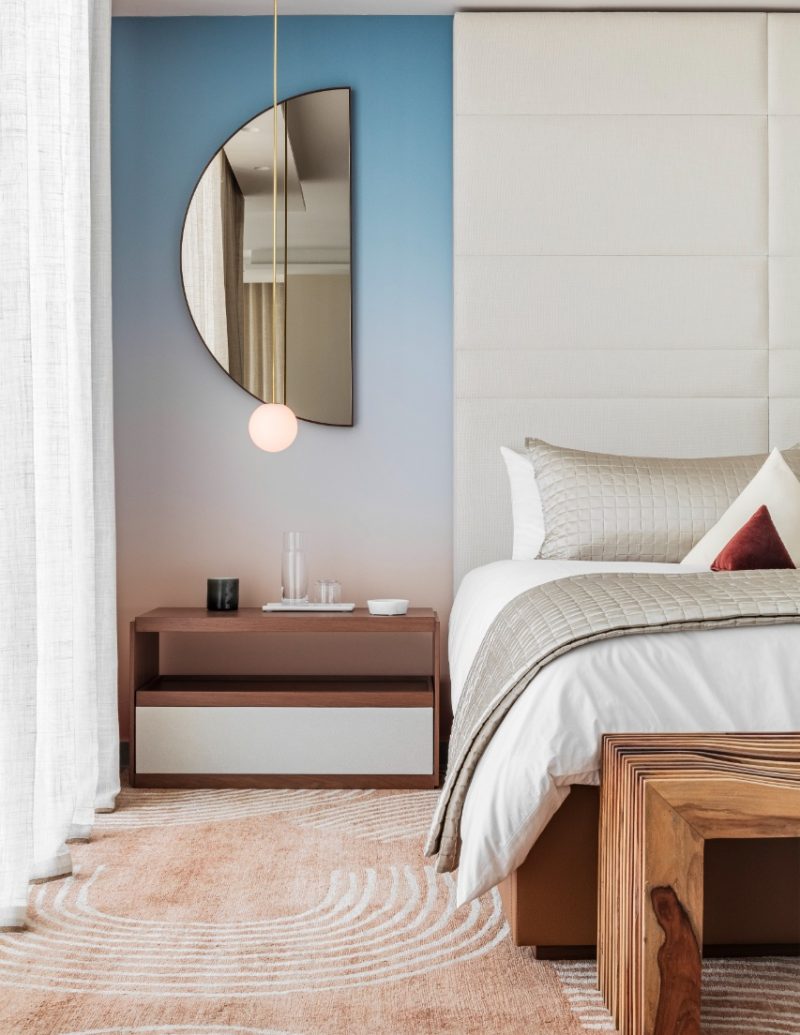
A client project in Miami.
Image by Kris Tamburello.
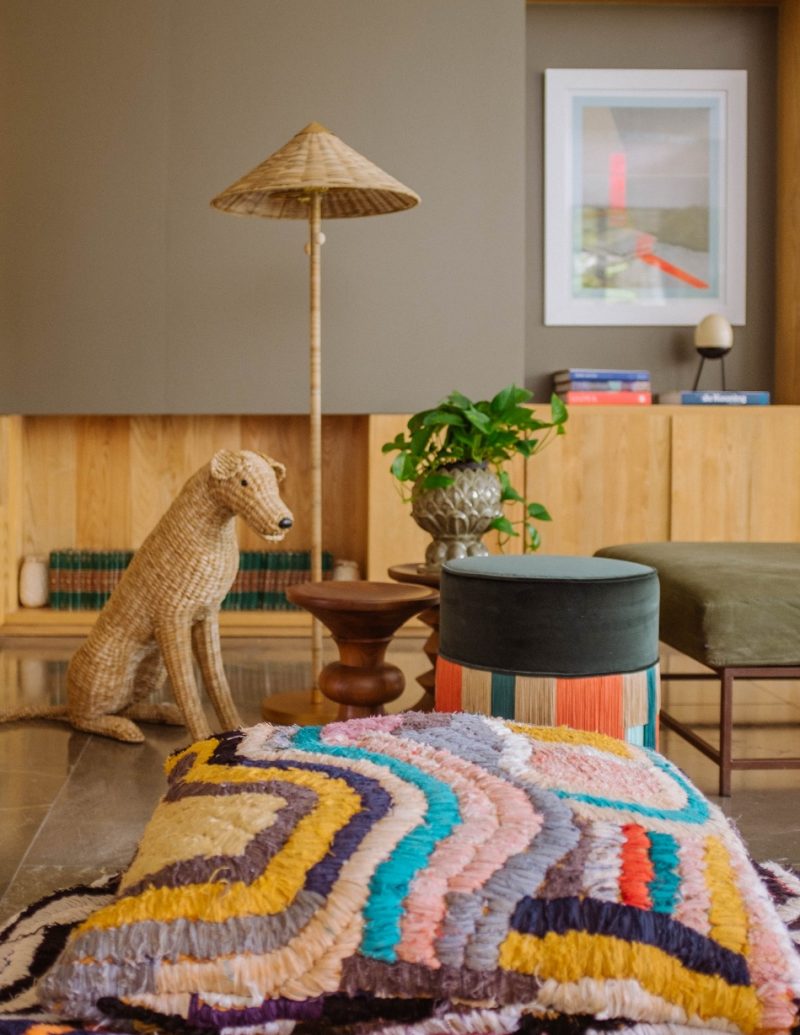
A project in the Dominican Republic.
Image by Victor Stonem.
LATINNESS: This reminds us of our interview with Gio Ponti’s great granddaughter, who explained how he had his hand in everything in his projects, from the architecture to the furniture and the art that would live in each space. Who are some of your biggest influences?
DESIREE: My mother, for sure, was number one, because she did that. She did a boutique hotel and picked everything from la teja del techo, to the fork for the restaurant or el bordado de los nombres del hotel. She picked everything, even the music.
Then I fell in love with Lina Bo Bardy. She’s also multi-functional, she does the windows, the art displays at the museums. All of those details. I love the austerity of Axel Vervoort, who’s from Belgium. I love that he creates these spaces that look eternal. They could be forever, and they’re never going to be passé because he doesn’t go with a style. He just does beautiful, comfortable spaces.
One couple that just, I think, switched it for me was Dimore studio. They are Italian, and the romanticism behind their interior spaces is incredible. They’re theatrical, but you want to live there. Oscar Niemayer, as well, the furniture he did, you know, and from making a metropolis to a house. Also, Luis Barragan, the way he works with color…
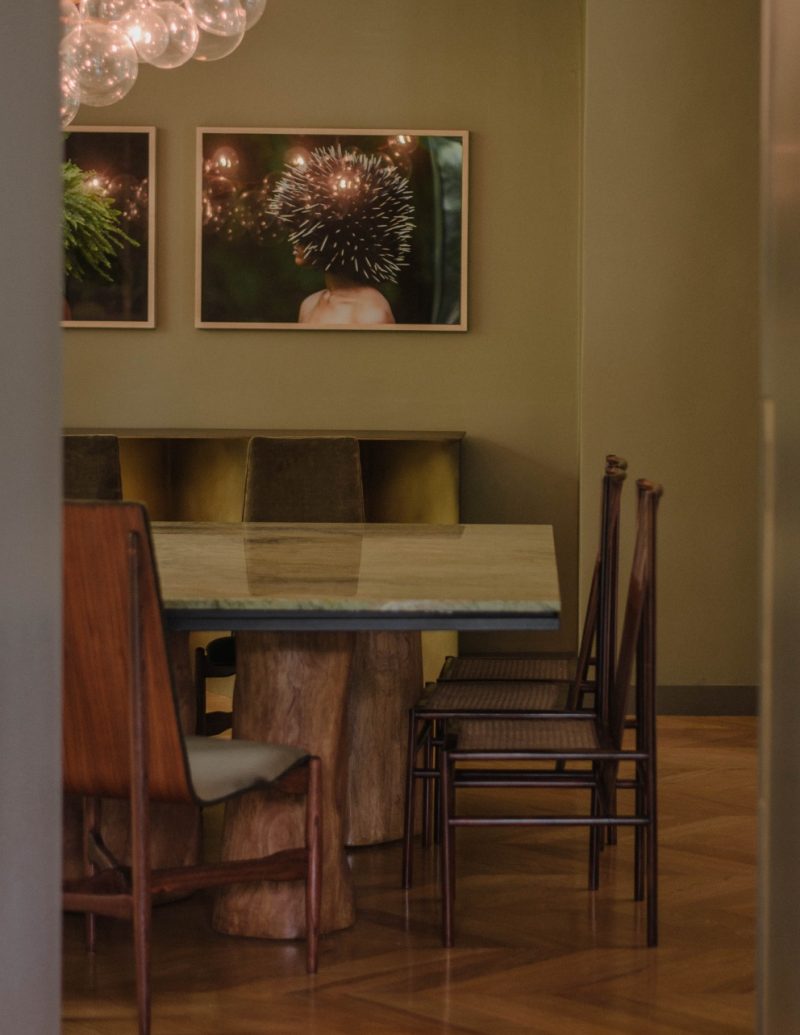
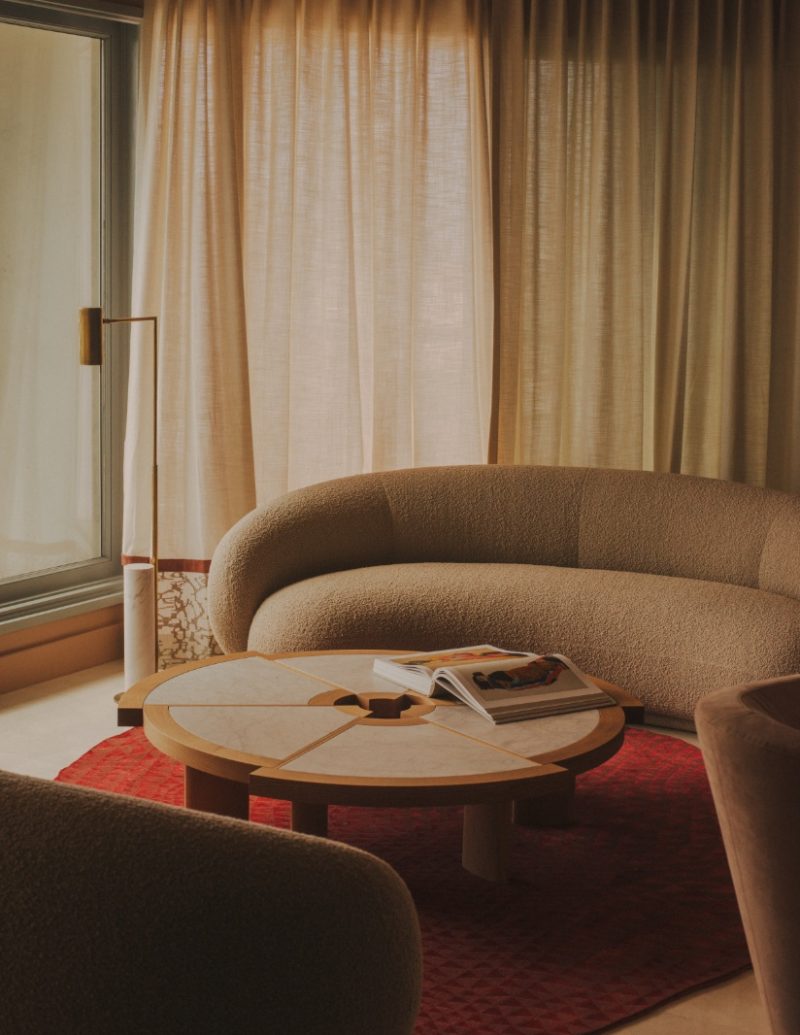
Images by Victor Stonem.
LATINNESS: You mentioned a few Latins, any favorite names in Latin artists, painters, designers that are currently on your radar?
DESIREE: Yes, painter wise, I love Dominican artists because it’s where I grew up. I love Hulda Guzman, she’s my favorite. She’s bizarre. I love Raquel Paiewonsky. There’s also this young photographer whose name is Karla Read, and she does photography, mostly portraits, but they’re very different from what you see in Latin America.
Andres Reisinger, es un poeta, for me. I think a lot of people see art, but once you meet the artist in person… he was obsessed with the brain, so he met a neurologist, saw all the studies he did and studied the human brain. He is very, very professionally deep in his work. Agnes Studio from Guatemala. I like Celia Sanchez, her pieces are beautiful. Javier Reyes, he’s doing a lot of design.
LATINNESS: We interviewed him, as well!
DESIREE: It’s funny because I did his sister’s house in the Dominican Republic around five years ago, and she kept telling me, my brother lives in Barcelona, then he moved to Mexico, to Oaxaca. I saw his work, and told her “We need to put his stuff in your house! Why don’t we have things from your brother here?” I’ve never met him in person, but I have his pieces here in the house.
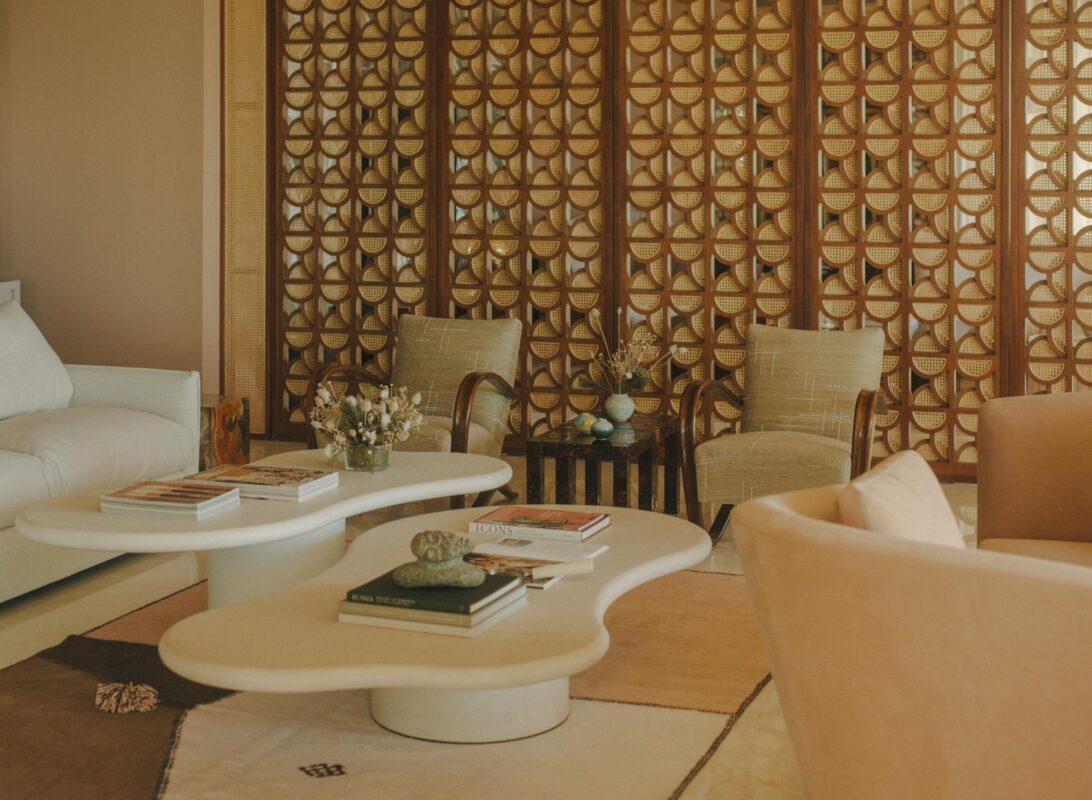
A client project in the Dominican Republic.
Image by Victor Stonem.
LATINNESS: Speaking of Latins, how has your culture influenced your career path?
DESIREE: I think through all the materials I tend to use. I don’t like to be thematic, so when I do interiors, I always try to work with my client to create a new baby. I try to also be acceptable in the local space, if I’m doing a project in Italy, Spain, Dominican Republic, etc.
Everyone tells me that there is something in my work- like tropical vegetation or greens or wicker or natural fibers- that has a tendency to be found in Latin America, it seems to always penetrate my interiors. I think just growing up outside, in the Dominican Republic, you can tell that has influenced my design. The vegetation, the materials that I grew up with.
LATINNESS: Where do you find inspiration?
DESIREE: I usually hate the first time when I start a project, it’s like procrastination. I don’t want to start it. I don’t want to sit down and do it because I feel like it’s not going to happen or I’m not going to get inspired. So when I have those moments, I always go to my books. I’m full of bookcases, so I have one of every exhibition I’ve been to. I also have interior designers, artists and anything that’s culturally related to me. I open those books and that’s how I start. It could be a color or a pattern that I see, or a chair, and I start with that. “OK, this chair, I love it, let’s play around with it.” I always try to put on music and get in a mood.
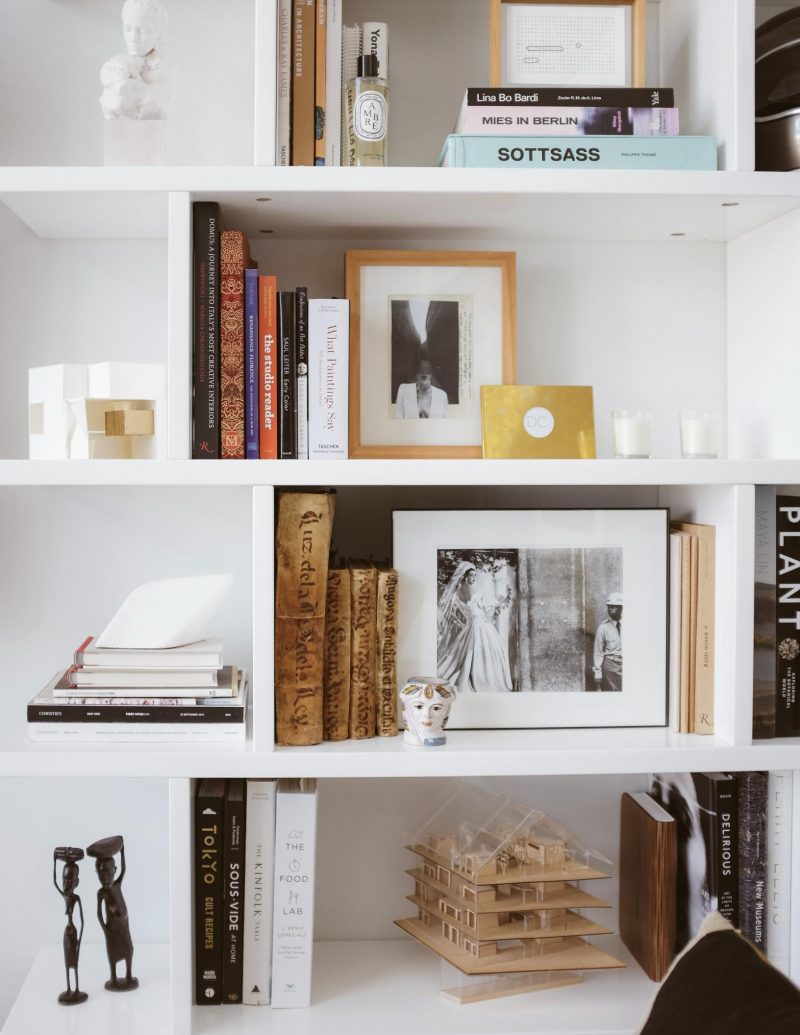
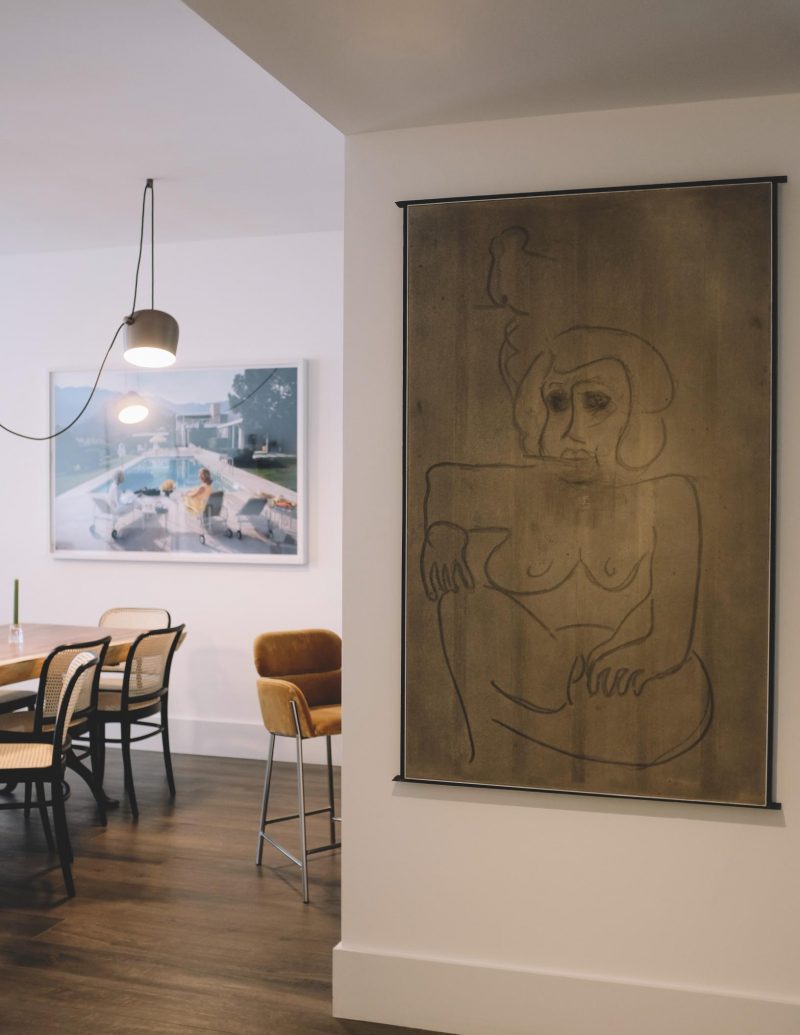
LATINNESS: As a creative, it’s often tricky to strike a balance between your vision and that of your clients. How do you manage this?
DESIREE: I think it was Richard Neutra who did these evaluations, but it’s not about getting the client or not. It’s more about getting to know the client, something like: Do you like to sleep on this side? Do you like the sun when you wake up? Do you not? Do you want blackouts? Do you drink your coffee in your living room? Things like that.
I ask these types of questions, for example, send me five pictures of what inspires you, of what you’ve liked around, so I can see not only their style, but what they tend to go to. Do you spend more time in your living room or does your family live around the kitchen? Do you relax and find space in your bedroom, or is your bedroom only for sleeping? From there, I can conceptualize their interior and decide where to focus things, or even how to rearrange the floor plan.
If your living room is small, but that’s where you spend more time, then maybe your bedroom should be a little bit smaller because that’s only where you sleep. I talk to them for an hour or two, and then we speak again, and I make a proposal. They check things they like and things we need to figure out, and that’s how it starts. Like a first date.
LATINNESS: Among your many titles, you’re also a mother. How do you manage your work life with your responsibilities for your daughter?
DESIREE: In the beginning, it was very tough. It was also the pandemic. We were all stuck inside. It was very overwhelming to split myself into two. Being a working person and then being a mother. Then I realized that I am giving a human to the world, and that’s a very important thing in life. I need to make sure this little person I’m bringing in is a respectable, warm, kind person. I cannot put her aside and focus only on my interiors.
That was a very difficult moment in my life when it clicked. Before, I didn’t sleep because of my projects, because I was so into it. Now I realize that while I love my projects, they’re not my entire world. The balance between that now I’ve just slowly started to understand… Except for the digital part, where my husband didn’t really give me an option, but now that she’s started school, I finally have -at least in the morning- three hours to sit down on my computer and get work done because it has been very hard to disassociate myself from her, especially because she’s two years old. I don’t know. I think there’s guilt, mom guilt.
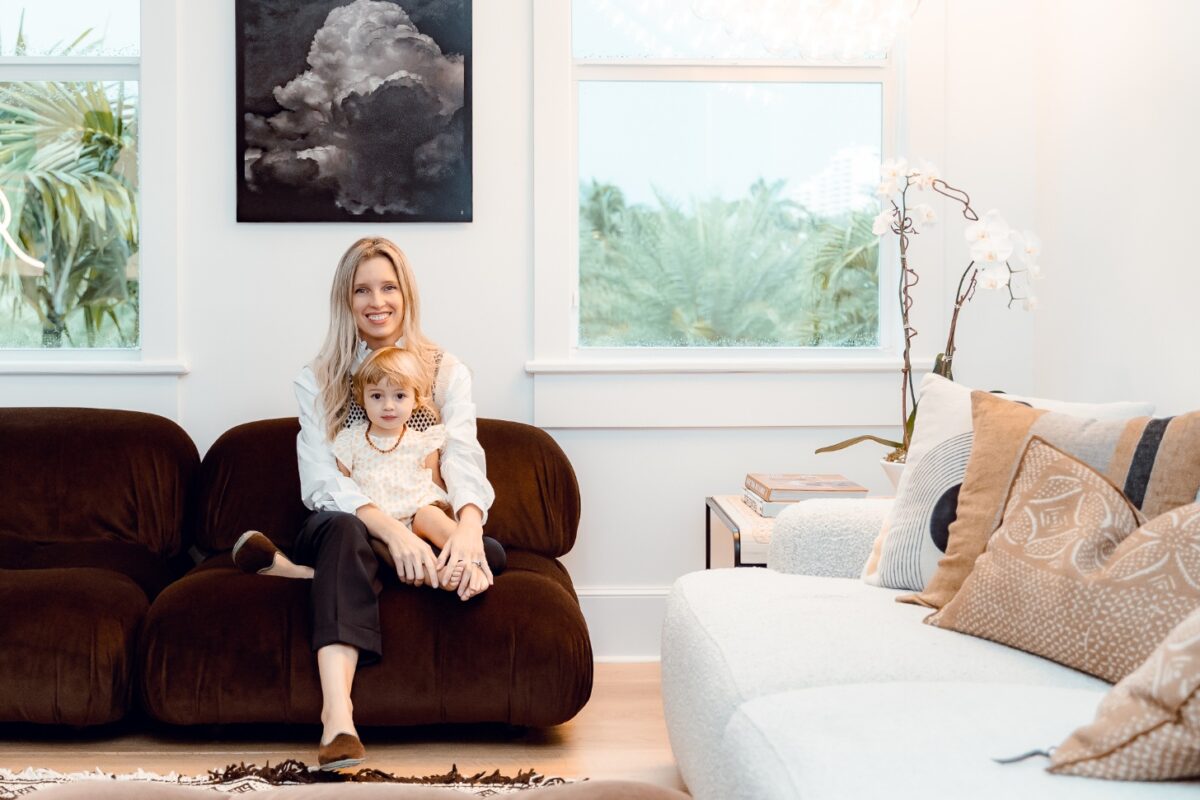
Desiree at home in Miami with her daughter.
Image by Outer Vision.
LATINNESS: I love when moms are honest about it because the reality is that there are a lot of conflicting emotions, and it’s difficult.
DESIREE: I have help, but also feel guilty because I don’t want another person raising my child. My husband told me this, and I give the same advice to some of my friends. Before, women had family structure around them to help. They lived by their grandmother, their aunts, their uncles, everyone lived closer. Now, because everything’s global, we often move to different places, and most of the time, we’ve moved to these cities that are not our home base.
My family is in the Dominican Republic, my sisters are in Spain, so nobody from my blood family is here. I have to find help in other ways. If somebody can offer you help, you should accept it because nobody can do it alone.
I grew up with a working mom, and for me, it was amazing seeing what she does. If she weren’t working, I might’ve not become a designer or an architect. There are influences in the way you do things.
LATINNESS: What books do you currently have on your coffee table and your nightstand?
DESIREE: I have the Gio Ponti on my coffee table. It’s very big, so nothing else fits. I also just got this one on my desk, Woman Made: Great Women Designers. I’m interested in seeing all the designs. I’m reading the Leonardo da Vinci biography. It has been very interesting, since we’re now doing stuff with art, not just design, and what we’re doing, me and Pablo, people have referred to as a new renaissance, because it’s digital and it’s a new way of seeing art.
I wanted to learn and see how it worked back in the day, how that existed, how that has influenced what we’re doing, and there are a lot of similarities in these things. It’s by Walter Isaacson, the same one who wrote Steve Jobs.
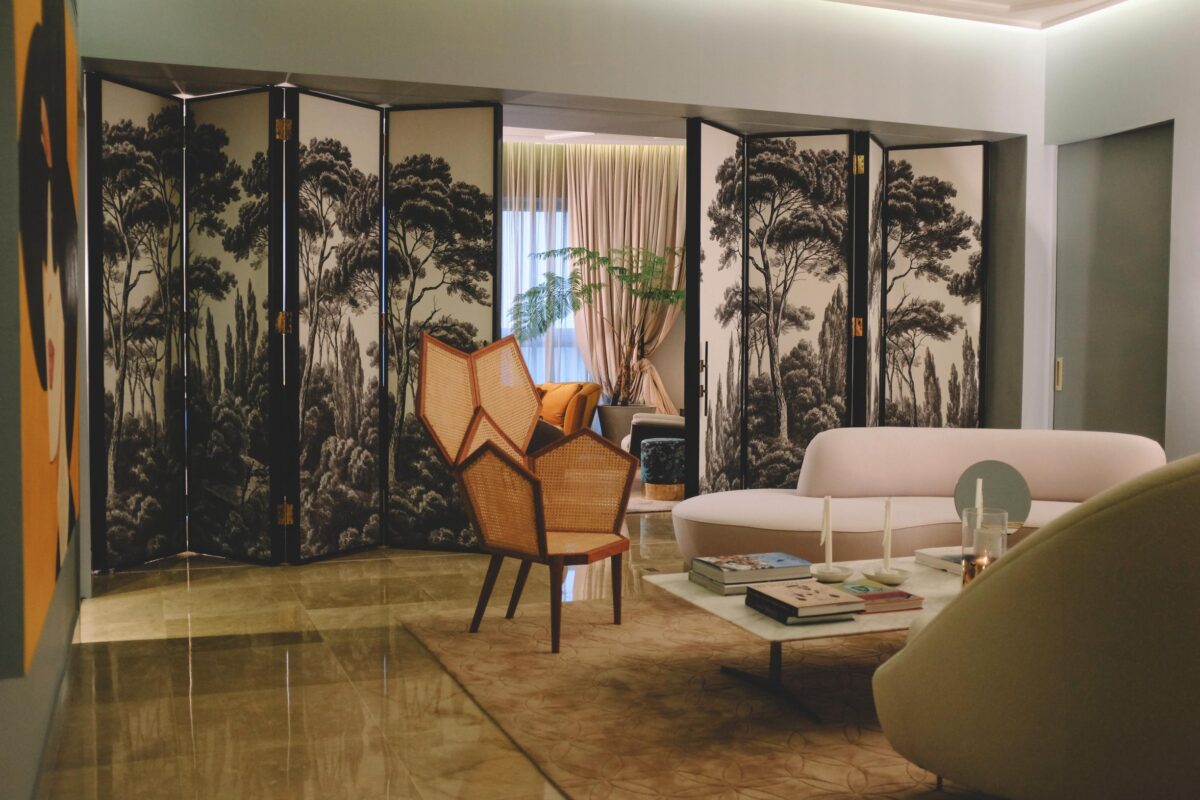
A project in the Dominican Republic.
LATINNESS: Do you have a favorite project?
DESIREE: It was an apartment in the Dominican Republic, and I think that’s the one in which I was able to find who I was as an interior designer, not only because of the clients, but also because it was when I started. I think that project launched me, and that’s the project where I tried to bring my backgrounds that are European and Latina.
I helped the client pick the art that was going to be there. I tried to pick Latin American, and especially, Dominican artists, but then some of the furniture was mid-century European. I tend to go very 60s, 70s in my interiors. I think Europeans back in the day made very beautiful, clean furniture lines. That project was the one where I felt I was working in a movie set, designing a set, and I was very into it.
LATINNESS: What are you working on now?
DESIREE: I finished two projects, but they still haven’t been built: a residential tower in the Dominican Republic and a hotel here in Miami. I am not allowed to say which one yet.
I have several private homes in the Dominican Republic, and then I have one apartment here in Miami, and my home which I took as a big project because it’s going to be a place where I can meet my clients and it needs to be something that is me.
Also, I’m trying to use it as an experiment for digital art. How to display digital art, how to showcase it. People think, well, it’s a JPEG on my phone and things like that, but no, you can make screens.
I’m thinking of custom designing a frame made out of organza for that screen so it’s not just a TV, but more like a frame that you can clip on and clip off. Then I’m trying to sit down at one point in my life and do a digital gallery more professionally. A 3D version of where we can showcase our art and when people want to see it, they don’t just have to come to our house. If they’re far away, they can still go in and see it.
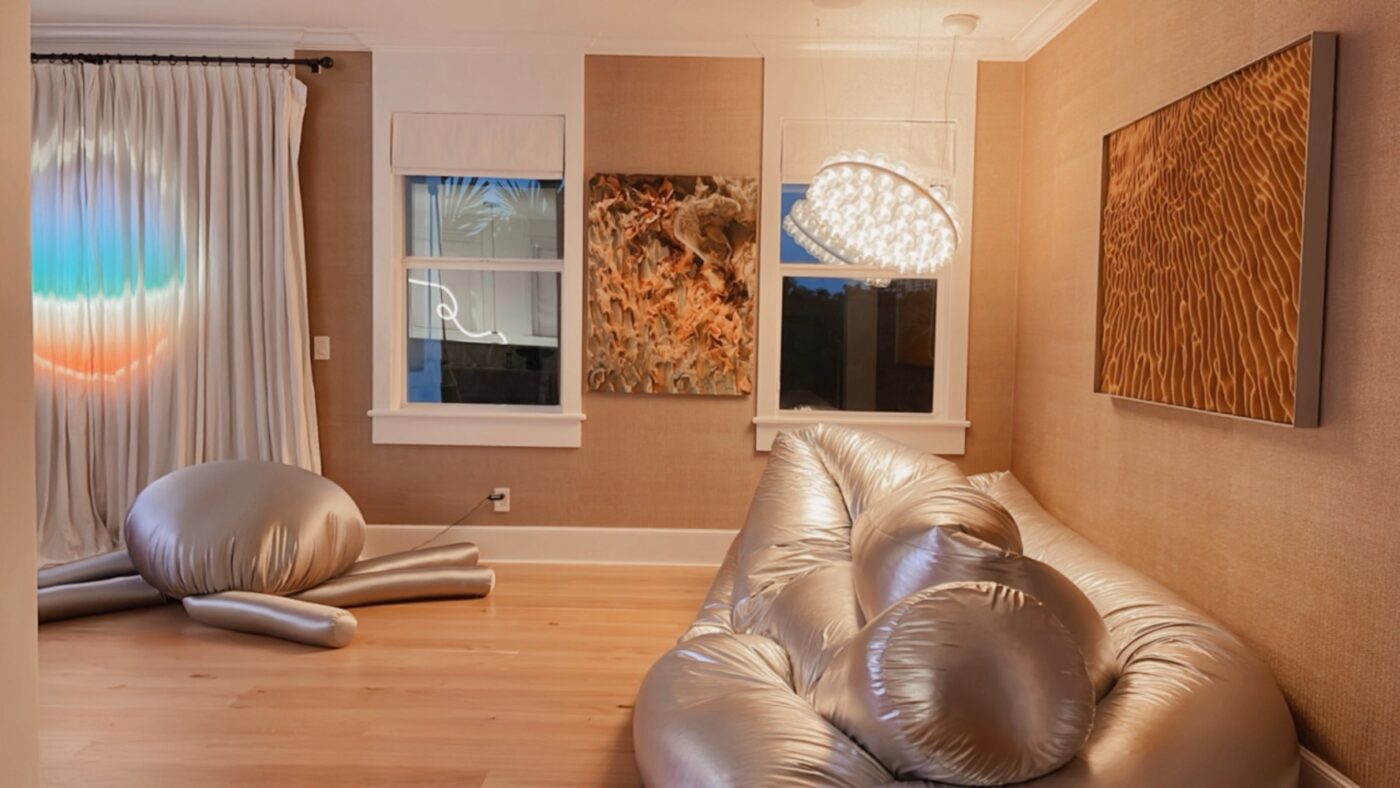
Desiree’s home in Miami.
LATINNESS: What’s the best advice you’ve received?
DESIREE:
Be very patient. I’ve received it from several people who are close to me, who I admire. I think patience is a very important thing in life. In order to think clearly, in order to make great decisions, you have to have a clear mind and a very serene self.
One of the best pieces of advice was to breathe. Taking deep breaths helps, and it has helped me a lot, especially now that I’ve become a mom. With clients, as an interior designer for their homes, it’s very personal. You have to tread water, because you don’t want to hurt anyone’s feelings. I think patience has been the most valuable.

